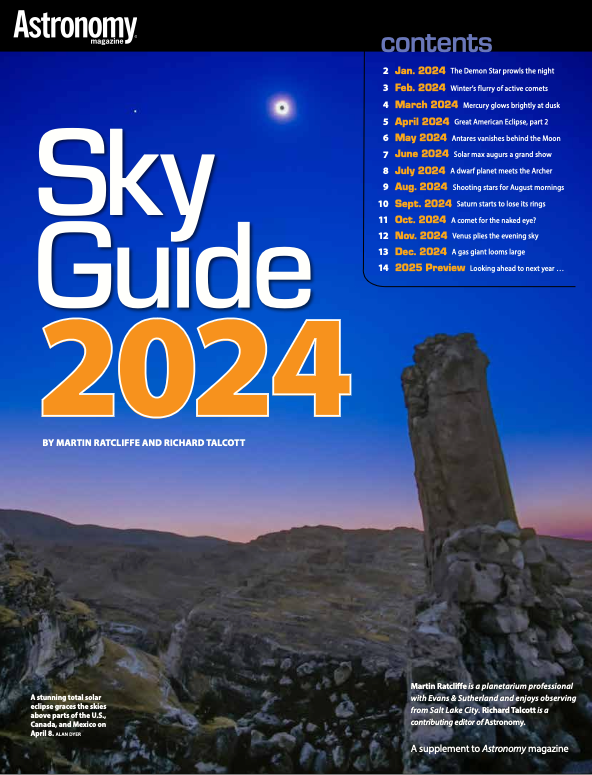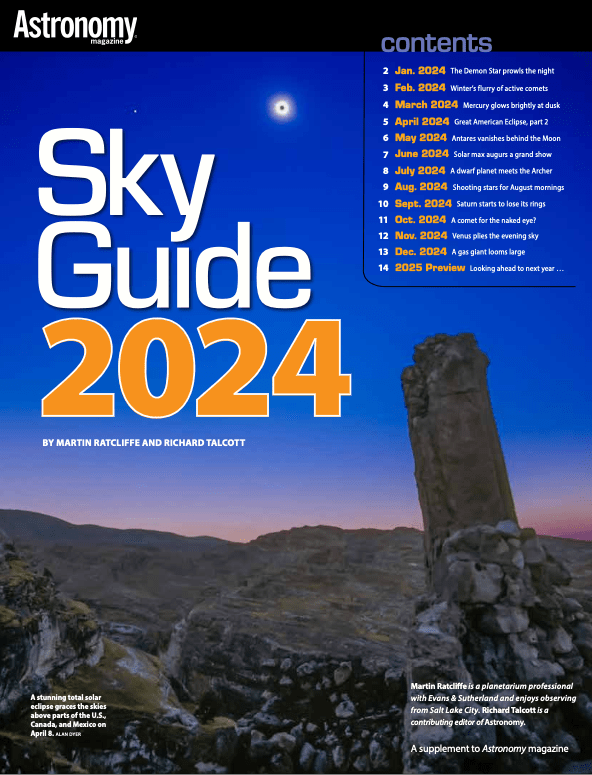Download this detailed sky guide to discover what 2024 has in store for skywatchers: bright planets, bright comets, and a U.S. solar eclipse.

Cover credit: Astronomy magazine; Image credit: Alan Dyer
2024 is an exciting year for skywatchers.
Mercury makes several appearances this year, thanks to its 88-day orbit. The best of the bunch comes in the first week of September, when the world climbs highest above the eastern horizon before dawn. It appears nearly as good on mornings in early January and late December. If you want to see it at dusk, your best chance comes in the latter half of July.
Venus shines brilliantly before dawn from New Year’s Day until March. It then disappears in the Sun’s glow before returning to view at dusk in the latter half of July. And although Mars begins the year lost in the Sun’s glare, it reappears before dawn in late January and grows more prominent as the year progresses — especially in autumn and winter.
Jupiter appears best around opposition in early December, though it’s a fine sight all year except in the weeks around solar conjunction in May. And Saturn provides a thrill for telescope owners from April through December, peaking in early September.
The year’s hallmark event is sure to be the April 8 total solar eclipse across North America. The stunning scene will play out wherever clear skies grace the path of totality, which begins on the Pacific Coast at Mazatlán, Mexico, before heading northeast, crossing into the U.S. in Texas and then making its way to New England and the Canadian Maritimes.
2024 also brings us both a penumbral (March 25) and a partial (Sept. 17) lunar eclipse, as well as an annular solar eclipse Oct. 2. Annularity crosses Chile and Argentina, including Chile’s Easter Island, where you can join Astronomy Editor David Eicher on the eclipse trip of a lifetime.
Meteor observing will suffer a bit of a down year, though the Eta Aquariids and Perseids should put on fine shows.
Finally, keep an eye to the sky for several promising comets in 2024, including C/2021 S3 (PANSTARRS), 62P/Tsuchinshan, and 144P/Kushida early in the year, followed by 12P/Pons-Brooks in spring and C/2023 A3 (Tsuchinshan-ATLAS) in the fall.
Check out our comprehensive Sky Guide 2024 below for more details on these and many more events to watch this year!

